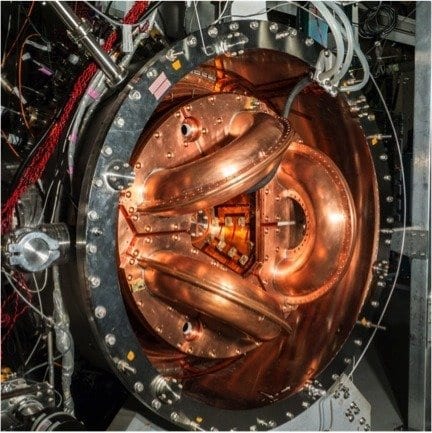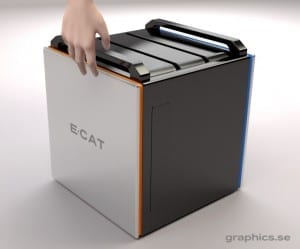
The UW’s current fusion experiment, HIT-SI3. It is about one-tenth the size of the power-producing dynomak concept.
Fusion energy almost sounds too good to be true – zero greenhouse gas emissions, no long-lived radioactive waste, a nearly unlimited fuel supply
Perhaps the biggest roadblock to adopting fusion energy is that the economics haven’t penciled out. Fusion power designs aren’t cheap enough to outperform systems that use fossil fuels such as coal and natural gas.
University of Washington engineers hope to change that. They have designed a concept for a fusion reactor that, when scaled up to the size of a large electrical power plant, would rival costs for a new coal-fired plant with similar electrical output.
The team published its reactor design and cost-analysis findings last spring and will present results Oct. 17 at the International Atomic Energy Agency’s Fusion Energy Conference in St. Petersburg, Russia.
“Right now, this design has the greatest potential of producing economical fusion power of any current concept,” said Thomas Jarboe, a UW professor of aeronautics and astronautics and an adjunct professor in physics.
The UW’s reactor, called the dynomak, started as a class project taught by Jarboe two years ago. After the class ended, Jarboe and doctoral student Derek Sutherland – who previously worked on a reactor design at the Massachusetts Institute of Technology – continued to develop and refine the concept.
The design builds on existing technology and creates a magnetic field within a closed space to hold plasma in place long enough for fusion to occur, allowing the hot plasma to react and burn. The reactor itself would be largely self-sustaining, meaning it would continuously heat the plasma to maintain thermonuclear conditions. Heat generated from the reactor would heat up a coolant that is used to spin a turbine and generate electricity, similar to how a typical power reactor works.
“This is a much more elegant solution because the medium in which you generate fusion is the medium in which you’re also driving all the current required to confine it,” Sutherland said.
The Latest on: Fusion reactor
[google_news title=”” keyword=”Fusion reactor” num_posts=”10″ blurb_length=”0″ show_thumb=”left”]
via Google News
The Latest on: Fusion reactor
- Arc Reactoron May 12, 2024 at 10:13 am
Tony Stark's arc reactor fuels his flying Ironman suit. James Rice joins Bryan Crump to discuss the real life equivalents to this palladium core fusion power source.
- French scientists breakthrough: Fusion reactor hits sun's core heaton May 11, 2024 at 11:47 am
Scientists have achieved a new record in nuclear fusion with the WEST fusion reactor in France. They successfully maintained plasma at 122 million degrees Fahrenheit for six minutes. This advancement suggests that one day,
- Magnetic islands stabilize fusion plasma, simulations suggeston May 9, 2024 at 8:27 am
Tokamak fusion reactors use intense magnetic fields to confine and heat hydrogen plasma within their doughnut-shaped interiors. At suitably high temperatures, the hydrogen nuclei will gain enough energy to overcome their mutual repulsion and fuse together to form helium nuclei, releasing energy in the process.
- Fusion reactors could create ingredients for a nuclear weapon in weekson May 8, 2024 at 12:00 am
Concern over the risks of enabling nuclear weapons development is usually focused on nuclear fission reactors, but the potential harm from more advanced fusion reactors has been underappreciated
via Bing News











